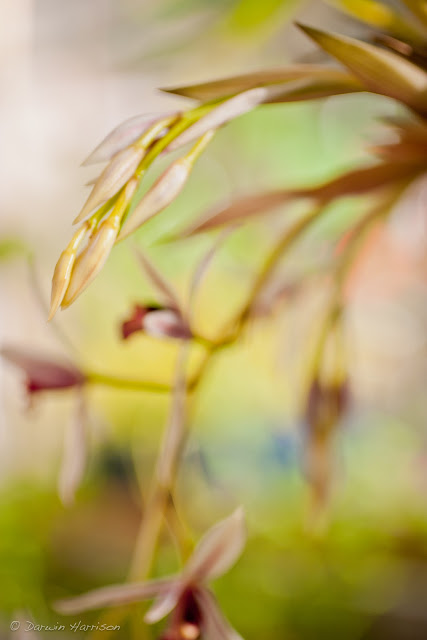Cymbidium dayanum, also known as The Phoenix Orchid, or the Tree Orchid, is a small pendulous cymbidium species found from Japan to Thailand where it grows low down on tree trunks in evergreen lowland forests.
The genus Cymbidium has 50 or so species, which are distributed throughout southern and eastern Asia and into Australia. Over the past century tens of thousands of hybrids have been created making it one of the most popular genus in the orchid family. These orchids have been cultivated for centuries in China and Japan, where they are valued for spiritual and medicinal purposes.
The small fragrant flower reminds me of a candy cane, and the timing couldn't be better as it will be in full bloom for Christmas. Happy Holidays to everyone!






































